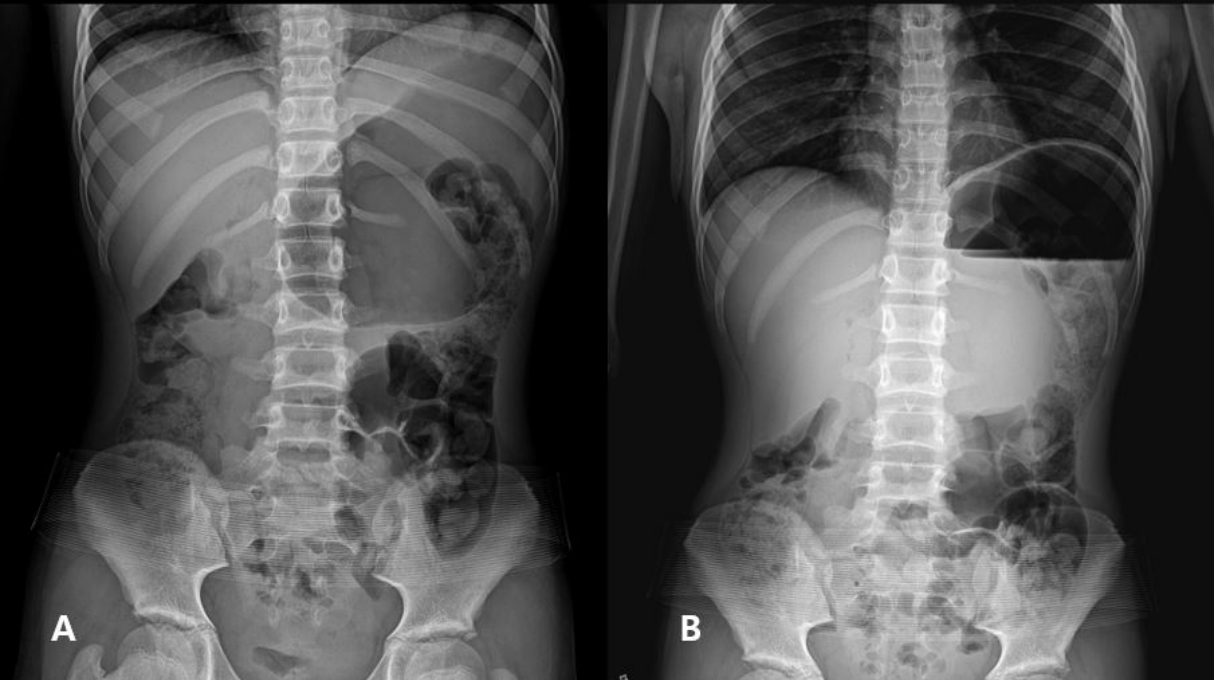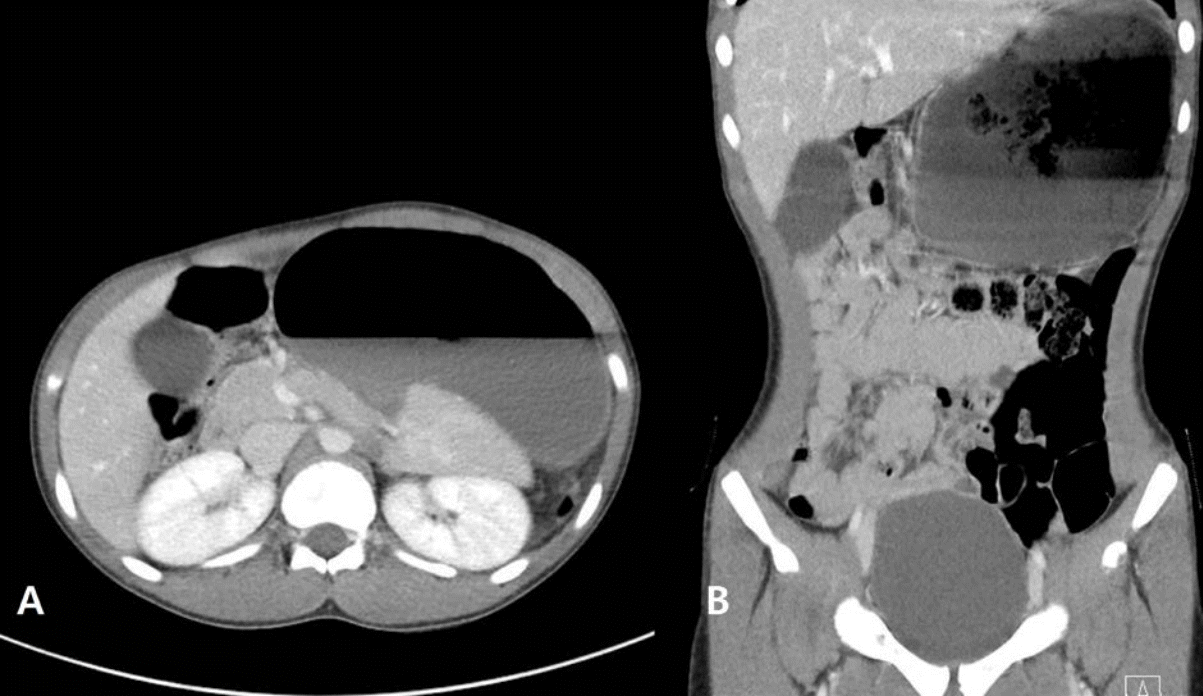1. Porcaro F, Mattioli G, Romano C. Pediatric gastric volvulus: diagnostic and clinical approach. Case Rep Gastroenterol. 2013; 7:63–8.

2. Trecroci I, Morabito G, Romano C, Salamone I. Gastric volvulus in children–a diagnostic problem: two case reports. J Med Case Rep. 2016; 10:138.
3. Darani A, Mendoza-Sagaon M, Reinberg O. Gastric volvulus in children. J Pediatr Surg. 2005; 40:855–8.

4. da Costa KM, Saxena AK. Management and outcomes of gastric volvulus in children: a systematic review. World J Pediatr. 2019; 15:226–34.

5. Cribbs RK, Gow KW, Wulkan ML. Gastric volvulus in infants and children. Pediatrics. 2008; 122:e752–62.

6. Lee HS, Jung EJ, Park JS, Park T. Chronic Gastric Volvulus as a Late Complication of Hepatectomy for Hepatoblastoma in a Child: A Case Report. Pediatr Gastroenterol Hepatol Nutr. 2019; 22:608–12.

7. Koh CY. A case of mesentero-axial gastric volvulus presenting as recurrent vomiting of a children. J Korean Soc Emerg Med. 2015; 26:95–98. Korean.
8. Jung SY, Bong JG, Park JH, Park HY. Acute gastric volvulus and wandering spleen. Korean J Gastroenterol. 2001; 38:366–70. Korean.
9. Lee JT, Kim HJ, Kim HS, Tchah H, Park HJ, Kim HS. A case of gastric volvulus in a 3-year-old female. Korean J Pediatr Gastroenterol Nutr. 2000; 3:89–92. Korean.

10. Kim HH, Lee SK, Kim KH. A case of gastric volvulus. J Korean Assoc Pediatr Surg. 2000; 6:153–5. Korean.

11. Jeon HJ, Seo JC, Ko BS, Bae JH, Kim DH, Park SM, et al. A case of an organoaxial type of chronic gastric volvulus. Korean J Gastrointest Endosc. 1998; 18:713–8. Korean.
12. Park WH, Choi SO, Suh SJ. Pediatric gastric volvulus–experience with 7 cases. J Korean Med Sci. 1992; 7:258–63.
13. Espinola DC, Nankoe SR, Eslami PW. Acute gastric volvulus in a 16-year-old male adolescent: a case report. Pediatr Emerg Care. 2017; 33:34–7.
14. Gerstle JT, Chiu P, Emil S. Gastric volvulus in children: lessons learned from delayed diagnoses. Semin Pediatr Surg. 2009; 18:98–103.

15. Tillman BW, Merritt NH, Emmerton-Coughlin H, Mehrotra S, Zwiep T, Lim R. Acute gastric volvulus in a six-year-old: a case report and review of the literature. J Emerg Med. 2014; 46:191–6.
16. Takahashi T, Yamoto M, Nomura A, Ooyama K, Sekioka A, Yamada Y, et al. Single-incision laparoscopic gastropexy for mesentero-axial gastric volvulus. Surg Case Rep. 2019; 5:19.






 PDF
PDF Citation
Citation Print
Print





 XML Download
XML Download